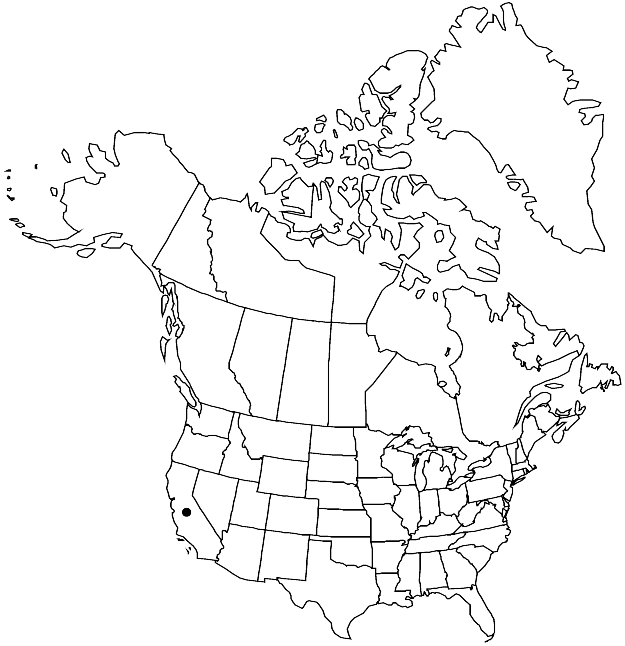Orthotrichum underwoodii
Bryologist 104: 268, figs. 1 – 19. 2001.
Plants to 1 cm. Stem-leaves erect when dry, lanceolate, 2–3.2 (–3.5) mm; margins recurved on one side in proximal 2/3, plane or slightly recurved in proximal 1/4 on other side, entire or papillose-crenulate; apex acute; basal laminal cells rectangular to almost quadrate, walls thin, usually not nodose; distal cells (7–) 11–14 (–16) µm, 1-stratose, papillae 2–4 per cell, simple to 2-fid, large. Specialized asexual reproduction absent. Sexual condition gonioautoicous or cladautoicous. Seta 0.4–0.6 mm. Capsule 2/3 emergent to short-exserted, cylindric, 2–2.3 mm, narrowly 8-ribbed entire length, constricted below mouth when dry; stomata immersed; peristome double; prostome present, rudimentary; exostome teeth 16, erect when mature, reflexed when old, irregularly papillose-striate; endostome segments 16, well developed, of 1 row of cells, filiform, papillose. Calyptra conic-oblong, smooth, sparsely hairy, hairs smooth. Spores 16–18 (–19) µm.
Habitat: Trees
Elevation: elevation unknown
Discussion
Of conservation concern.
Orthotrichum underwoodii is known only from type material from the Santa Clara Mountains of Santa Clara County. The plants have slightly ribbed cylindric capsules with erect exostomes of 16 teeth and endostomes of 16 long and linear segments. In peristome features O. underwoodii is similar to O. diaphanum, but that species has hair-points on its leaves. Orthotrichum underwoodii could be confused with O. tenellum, but the latter species has much more strongly ribbed capsules, reflexed exostome, endostome of eight well-developed but short segments, and blunt, very stiff leaves with incurved apices.
Selected References
None.
Lower Taxa
"entire" is not a number.
